ANTIGO FORNO DE CAL DA LAGOA

PORTUGUÊS

O ANTIGO Forno de Cal da, então, Vila da Lagoa

Num passado longínquo existiu um Forno de Cal, junto ao Portinho de São Pedro, no litoral da atual cidade de Lagoa. Ainda hoje é possível observar, a partir do Clube Náutico de Lagoa, o que resta desta infraestrutura. O pequeno cais existente nesta zona, foi construído para que aí se desembarcasse a cal (e também o barro) proveniente da vizinha ilha de Santa Maria.
“A produção de cal foi, desde sempre, observada com atenção dada a sua absoluta necessidade para a produção de afazeres vários, principalmente ligados à construção civil”.
“A cal, produzida a partir de depósitos calcários de origem marinha (vinda, em particular da vizinha ilha de Santa Maria), era usada para rebocar e isolar a humidade das casas. Tal como o barro constituiu produto de exportação exclusivo e teve o seu auge no princípio do séc. XX”.
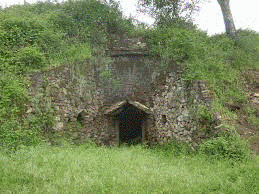
“A geologia da ilha de Santa Maria caracteriza-se pela presença de um substrato basáltico deformado por fraturas que seguem uma orientação preferencial NW-SW, no qual está intercalada uma densa rede filoniana com a mesma orientação. Intercalados nos basaltos encontram-se algumas formações de carácter traquibasáltico. Sobre estes materiais encontram-se extensos depósitos fossilíferos, incrustados em depósitos calcários de origem marinha, formado num período de transgressão em que o oceano se encontraria a cerca de 40 metros acima do atual nível médio do mar. A presença destes depósitos, únicos nos Açores, originou na ilha uma indústria de extração de calcário e fabrico de cal, que atingiu o seu auge no princípio do século XX, encontrando-se há muito extinta”.

“A tecnologia de fabrico da cal é simples, consistindo na disposição entremeada de camada de pedra calcária e de combustível (como cepas, torgas, ramos e outros materiais lenhosos). Neste processo o importante é que a lenha arda lentamente e durante muito tempo, através do controlo cuidadoso das entradas de ar (de maneira a que o fogo não se apague nem arda demasiado depressa e com violência), o que permite a calcinação eficiente do calcário e a sua transformação em cal. Depois de arrefecer a cal era então retirada pela boca de descarga, situada no fundo do forno, e transportada para o armazém da cal”.

O ENIGMA

A CACHE
Deverá procurar as informações necessárias, no listing desta cache, de forma a conseguir determinar o GZ!!!
A cache tem um formato convencional.
Tenha cuidado com os mugles e deixe, por favor, tudo como encontrou.
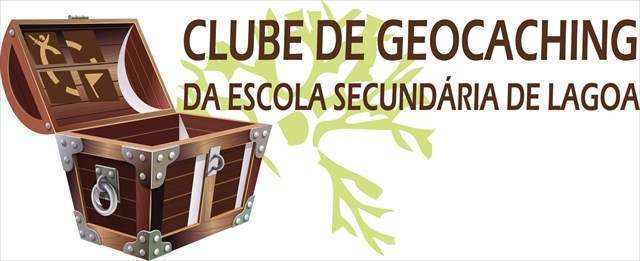
OLD “LAGOA” LIME OVEN
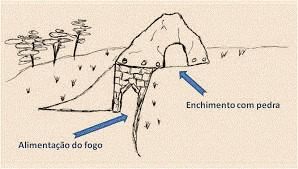
ENGLISH

THE OLD Lime Furnace, then, “Vila da Lagoa”
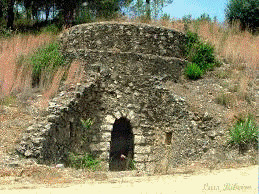
In the distant past there was a Cal Furnace, near Portinho de São Pedro, on the coast of the present city of Lagoa. Even today it is possible to observe, from the Nautical Club of Lagoa, what remains of this infrastructure. The small quay in this area was built so that the lime (and also the mud) from the neighboring island of Santa Maria could be disembarked there.
"The production of lime has always been observed with attention given its absolute necessity for the production of various tasks, mainly related to civil construction."
"Lime, produced from limestone deposits of marine origin (coming from the nearby island of Santa Maria in particular) was used to tow and insulate the dampness of houses. Just as clay was a product of exclusive export and had its peak at the beginning of the century. XX ".
"The geology of the island of Santa Maria is characterized by the presence of a basaltic substrate deformed by fractures that follow a preferred NW-SW orientation, in which a dense, filonial network with the same orientation is intercalated. Intercalated in the basalts are some formations of traquibasaltic character. On these materials are extensive fossiliferous deposits, embedded in calcareous deposits of marine origin, formed in a period of transgression in which the ocean would be about 40 meters above the current average level of the sea. The presence of these deposits, unique in the Azores, originated in the island an industry of limestone extraction and manufacture of lime, which reached its peak in the early twentieth century and was long extinct.
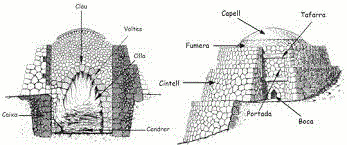
"Lime's manufacturing technology is simple, consisting of the intermixed arrangement of limestone and fuel (such as vines, torgas, branches and other woody materials). In this process the important thing is that the wood burns slowly and for a long time, through the careful control of the air inlets (so that the fire does not go out or burn too quickly and with violence), which allows the efficient calcination of limestone and its transformation into lime. After cooling the lime was then withdrawn through the discharge mouth, located in the bottom of the furnace, and transported to the lime store ".

THE ENIGMA

THE CACHE
You should look for the necessary information, in the list of this cache, in order to determine the GZ !!!
The cache has a conventional format.
Be careful with the mugles and please leave everything as you have found.
